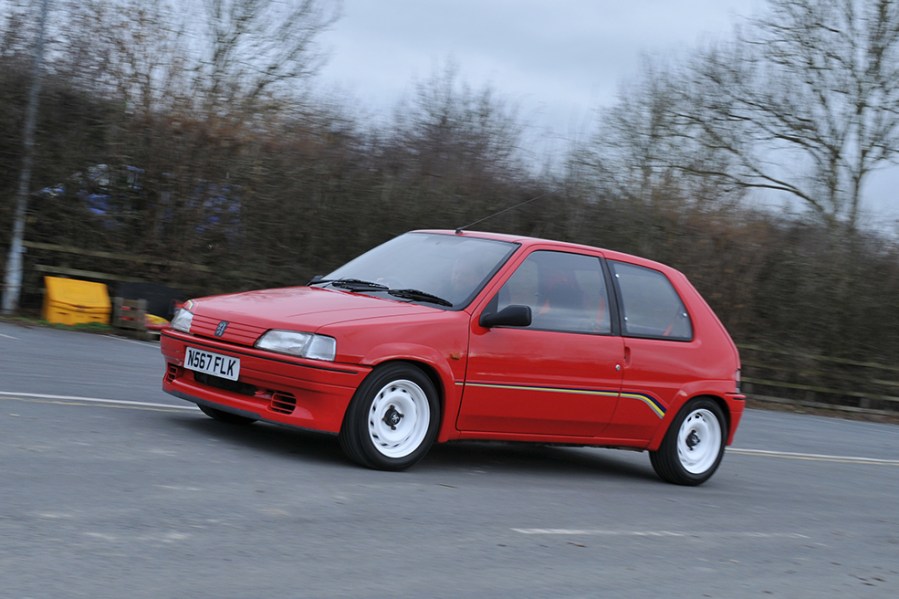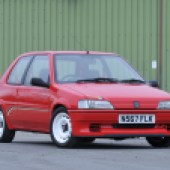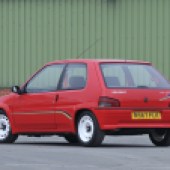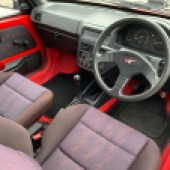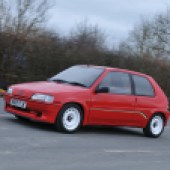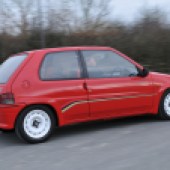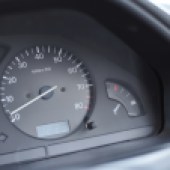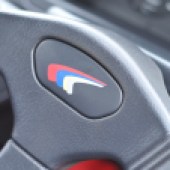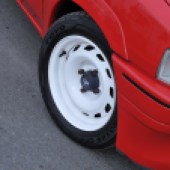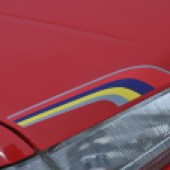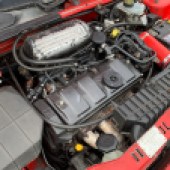One of the best hot hatchbacks of the 90s, the Peugeot 106 Rallye combines light weight with a fizzy engine that loves to be pushed
Peugeot’s fabled 205 GTi is one of those modern classics which inevitably arouses fierce debate: even those who have never even sat in one of these fast but frantic fliers will have an opinion as to whether it’s the revvy 1.6 or the torquey 1.9 which is best.
In truth, neither camp is quite right since in many ways these modern classic Peugeots are at their very best in the smaller-engined versions. The feisty 1.4-litre XS model for example was the 205 in warm hatch guise but its carb-fed motor offered snappy response the equal of either of the injected engines and a grin-per-pound quotient better than all of them, even if it didn’t have quite the top-end pace or snappy rear-end breakaway.
Taking the concept of less being more to its ultimate conclusion was the 205 Rallye, developed as an homologation special, with the 1.4-litre alloy TU motor slimmed down to 1294cc to squeeze under the FIA’s 1.3-litre classes. With a high-lift cam and a pair of Webers, it was good for 102 bhp at 6800rpm and the car was lightened to suit, lacking soundproofing and convenience features like electric windows and radio, to bring the kerb weight down to just 294kg.
When the 205 bowed out, it fell to the smaller 106 to receive the Rallye treatment and the first cars appeared in UK showrooms in late 1993. The recipe was very similar, with the smaller Rallye inheriting the 1294cc TUJ2 engine, although catalysed and fuel-injected which explains the drop to 100bhp at 7200rpm. The 106 Rallye also wore the distinctive squared-off wheelarch extensions and sat on the same distinctive white Michelin 5.5×14 steels. Suspension was largely to 106 XSi spec although with larger-diameter anti-roll bars, while the front bumper was also an XSi item, with the foglights replaced by dummy brake cooling ducts which could easily be unclipped to become real brake cooling ducts.
UK 106 Rallye models were offered in Bianca White, Cherry Red or Black, all featuring distinctive Peugeot Talbot Sport striping down the flanks and across the offside bonnet corner.
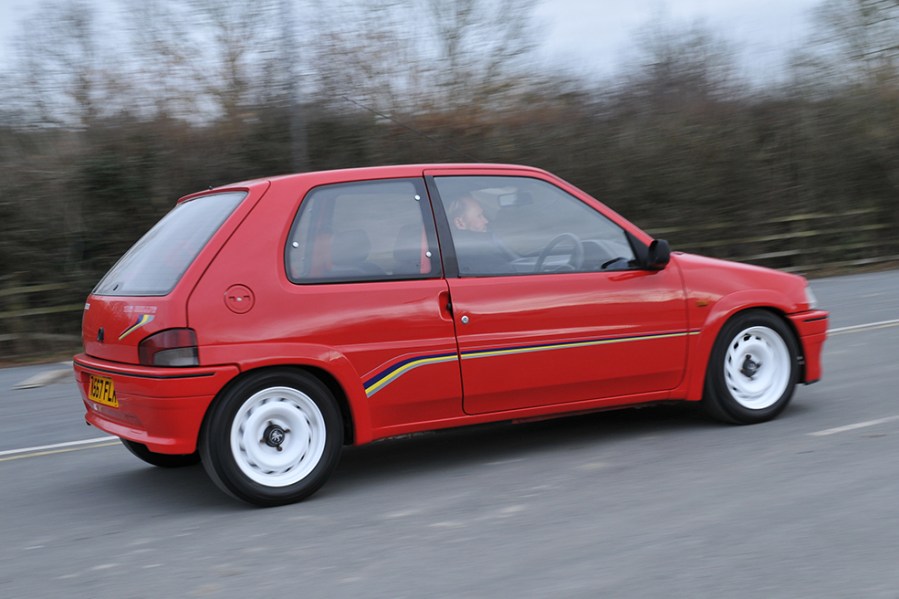
Inside, the lightweight theme was continued from the 205: a blanking plate instead of a radio, manual windows and speaker grilles but no speakers. Sports-style seats wore a repeated Peugeot Talbot Sport logo, while the red seat belts evoked the MG Metro.
All in all, it was a neat little package which allowed the 106 to be seen at its best, that revvy little motor suiting the lightweight character of the car perfectly and the subtly uprated suspension nicely judged without being overly harsh.
Road testers were unanimous in their praise back in the day but thanks to the way they make you drive, coupled with legendarily fragile French build, the 106 Rallye is a rare beast today, which is why we jumped at the chance to sample the example you see here. A Cherry Red car from 1995, it appears in the February 15 Brightwells sale (details below) and is a real survivor.
Being fuel injected, the 106 Rallye doesn’t need any faffing with a manual choke lever, the 1300 barking eagerly to life on the first twist of the stubby key. The lengthy rubberised gearlever has the familiar slightly vague shift action when shunting back and forth, while there’s naturally no power steering which makes it hard work at parking speeds.
Initially the 106 Rallye feels brisk rather than quick, but once it’s warmed through and we can give it some revs it’s obvious that this was not a package built for driving gently. In a delightfully old-school way, the spiky cam and small capacity means all the performance is at the top end and you need to work it hard to get the best from it. Not in an extreme Honda VTEC kind of way, but rather wind it out in the gears, at which point it all begins to gel very nicely.
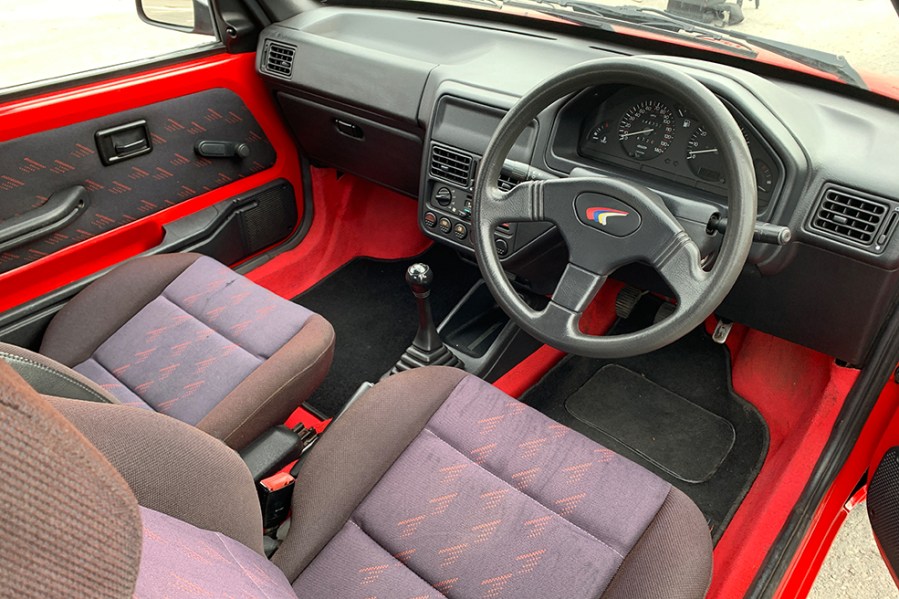
Peugeot 106 Rallye: our verdict
It takes just a few minutes for the less-is-more philosophy to shine through: the revvy little engine doesn’t overwhelm the car with torque steer and wheelspin like the 1.9 unit often can in the 205, the light weight gives it a crisp turn-in and there’s a lovely poise to the Rallye which is lacking in bigger, more complex performance hatches. It’s very different from a contemporary Golf GTI for example and also quite unlike Peugeot’s own GTi models, needing an enthusiastic driver to get the best from it.
Yes, we very much liked it – and the Rallye proves my opening comment about these cars being at their best in smaller-engined form.
if you want to own this very well presented piece of ’90s performance car history, bidding closes on Wednesday, February 15 from 7pm. Budget on £5500–7500; you’ll find more details here.

